Dorsal approaches to the PIP joint
1. Indications
The dorsal approach to the proximal interphalangeal (PIP) joint is indicated for intraarticular fractures.
It is also useful for coronal plane fractures of the condyles of the proximal phalanx.
Central slip avulsion fractures from the dorsal base of the middle phalanx are an ideal indication for this approach.
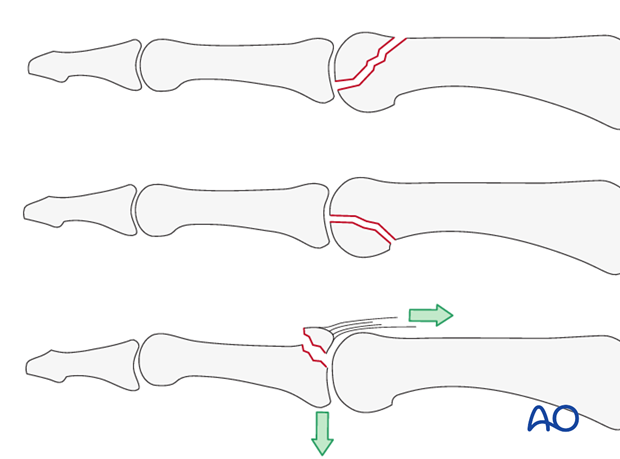
2. Skin incision
Make a straight midline dorsal incision over the PIP joint.
With this incision, vascularity and venous drainage are well preserved. Early postoperative motion will prevent scarring between skin, tendon and bone.
The disadvantage of this incision is that any skin and tendon scarring will be in the same line.
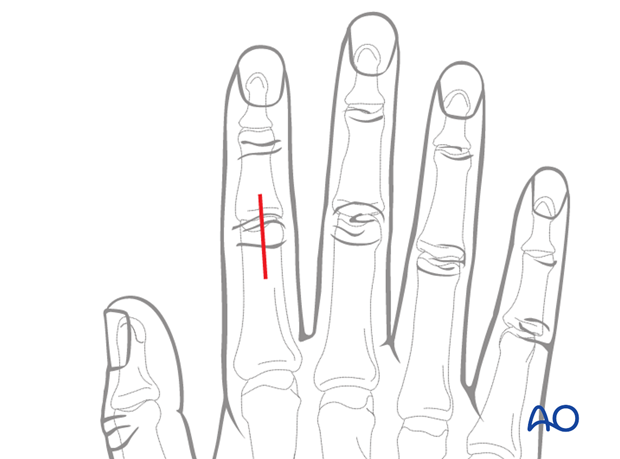
3. Alternative: curved skin incision
Alternatively, make a curved skin incision over the PIP joint. The convexity of the incision is planned so that the scar does not involve the radial border of the index, or the ulnar border of the little finger. The fracture configuration and implant placement must be given priority when planning the incision.
The advantage of the curved incision is that the skin and tendon scarring are not in line.
The disadvantage is reduced vascularity at the apex of the curve, with a risk of necrosis and delayed skin healing.
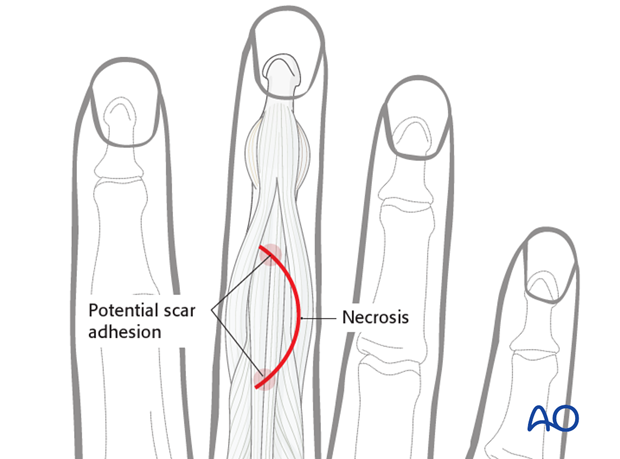
4. Nerve identification
Blunt dissection extends the approach into the thin subcutaneous tissue, taking care to identify and protect the dorsal sensory branches of the radial, ulnar, and median nerves.
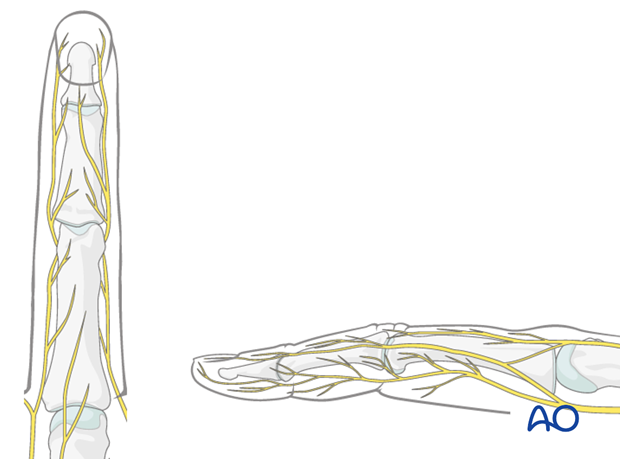
5. Vein identification
The dorsal venous system of the fingers has longitudinal and transverse branches. Be careful to preserve the longitudinal branches. The transverse branches may be ligated, or cauterized with a bipolar cautery, for better exposure, but preserve as many dorsal veins as possible to avoid possible congestion and swelling.
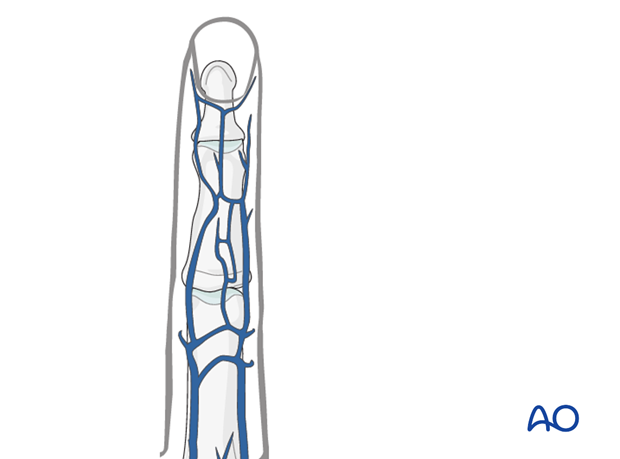
6. Skin retraction
Retract and elevate the skin and the subcutaneous tissue as a single layer. The extensor apparatus is fully exposed and intact.
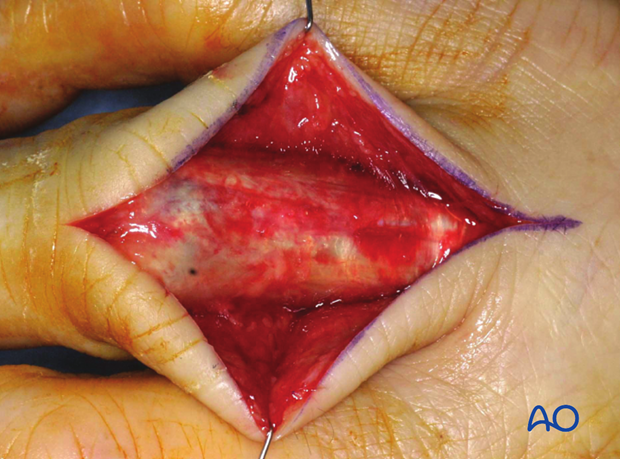
7. Alternative procedures
Alternative 1: Approach between the central and lateral extensor slips
Alternative 2: Central midline extensor splitting
Alternative 3: Approach lateral to the lateral band of the extensor apparatus
Alternative 4: Elevation of the central slip as a distally-based, V-shaped flap (Chamay approach)
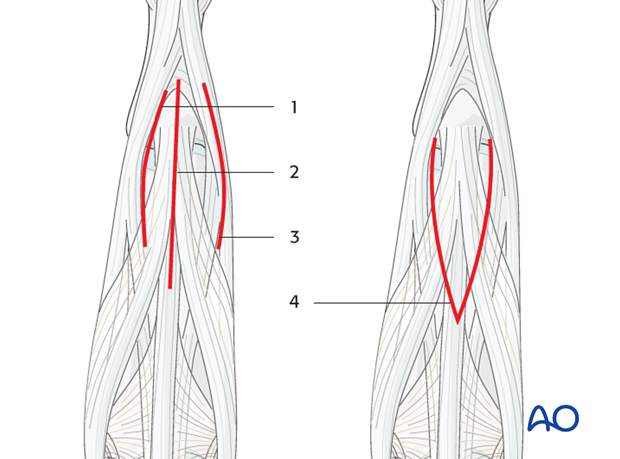
8. Recommended approach:
Between lateral and central extensor tendon slips
Make an incision in the tendon, between the central slip and the lateral band.
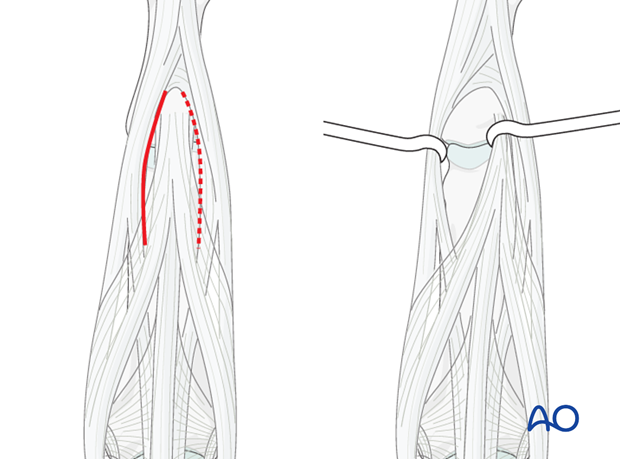
Retraction of the slips exposes the dorsal capsule of the PIP joint.
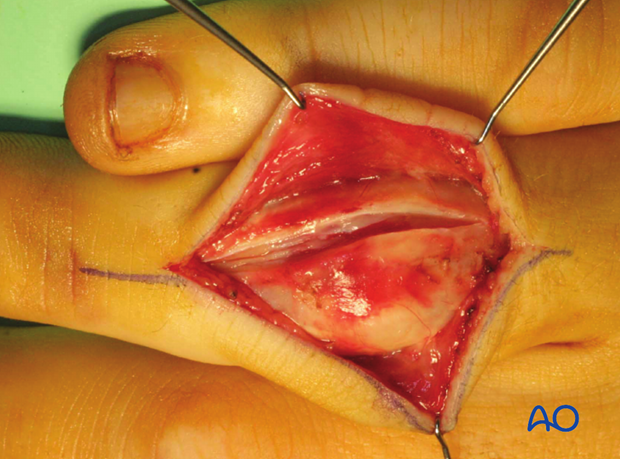
9. Capsulotomy
Perform a vertical capsulotomy in order to expose the joint.
Caution
Avoid detachment of the extensor central slip and of the collateral ligaments.
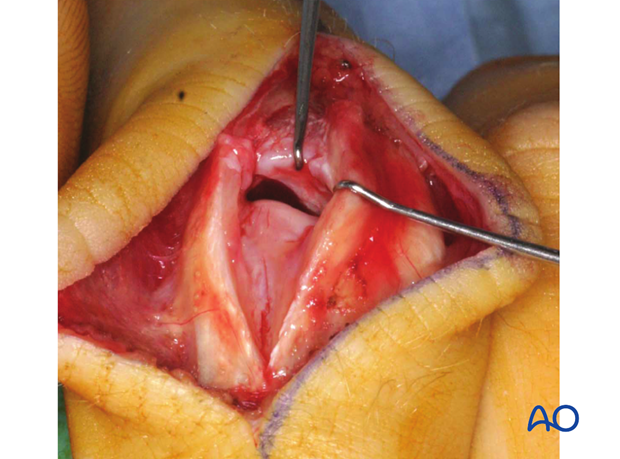
10. Flex for better exposure
Flexing the PIP joint allows the lateral band to move in a palmar direction to give a better exposure of the joint.
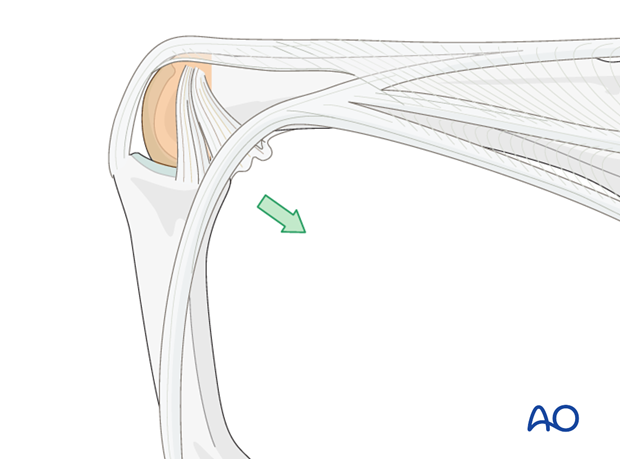
11. Alternative 2: Split down the middle
Make a straight incision and perform a longitudinal midline tenotomy.
Do not disinsert the central slip.
The disadvantage of this approach is the possibility of developing a boutonnière deformity or lack of extension.

12. Alternative 3: Lift the central extensor slip as a V-shaped flap (Chamay approach)
Raise the central extensor slip as a distally-based, V-shaped flap, leaving it attached to the base of the middle phalanx.
Perform a transverse, dorsal capsulotomy.
Flexing the joint causes the lateral band to slip in a palmar direction, exposing the whole joint.
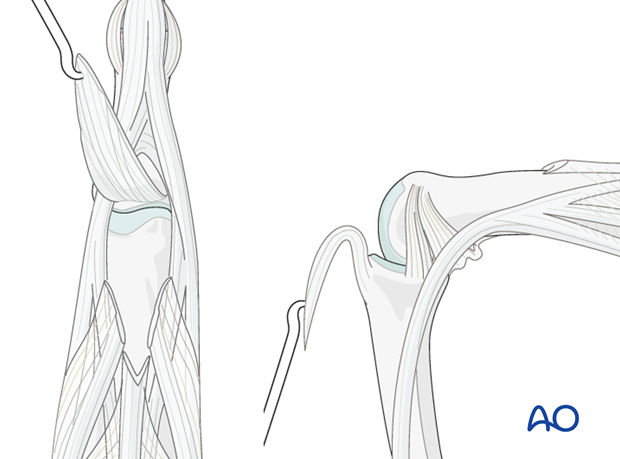
13. Alternative 4: Lateral to the lateral extensor band
Incise gently lateral to the lateral band.
Divide the TRL, using a dental pick inserted between it and the collateral ligament, to avoid accidentally cutting the collateral ligament.
A longitudinal capsulotomy allows the joint to be inspected.

Note
Limited reach
This dorsolateral approach does not allow access to the opposite condyle which in some situations is necessary, notably in irreducible bicondylar fractures.

14. Wound closure
Regardless of the approach chosen, all tendon incisions ...
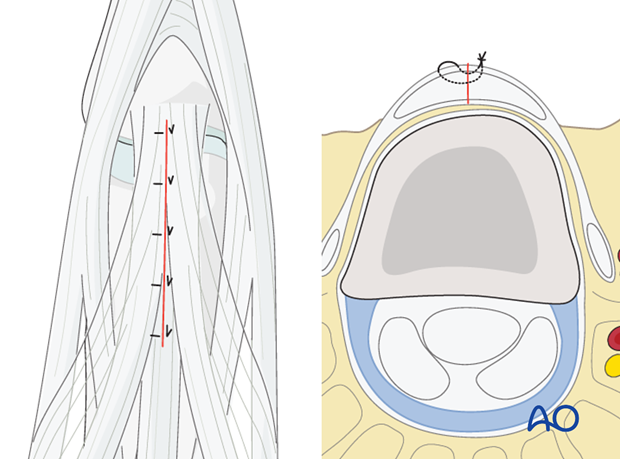
... need to be sutured prior to wound closure.













